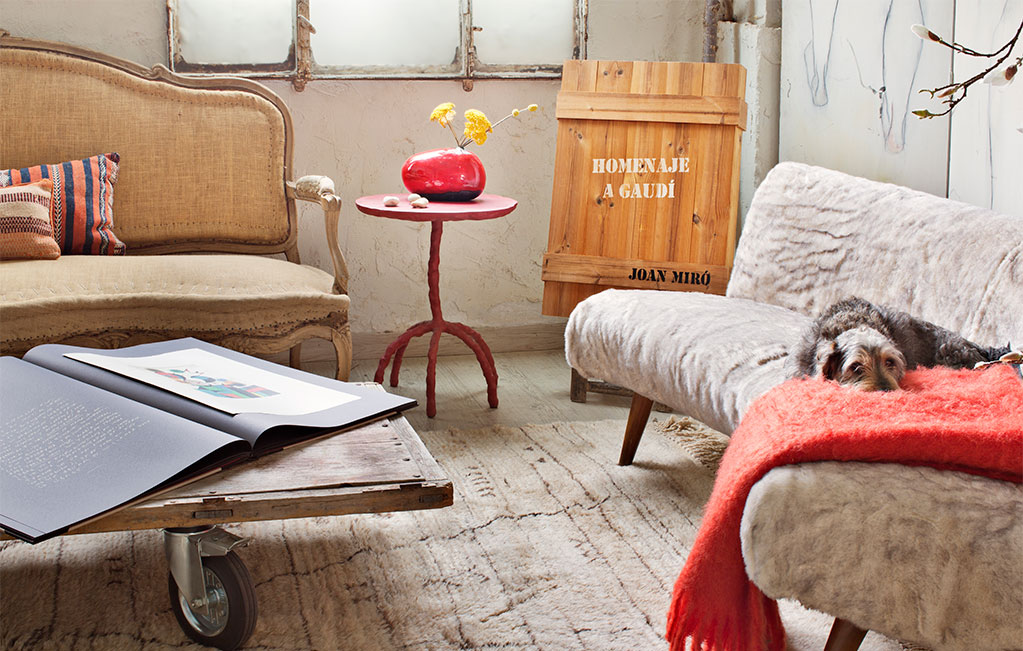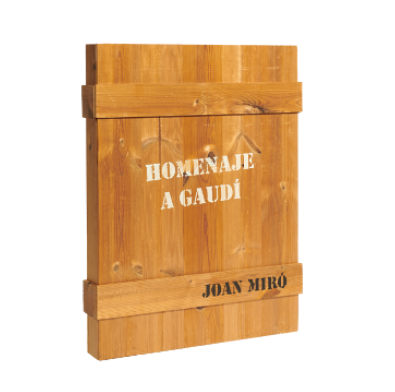Gaudí and Miró, two geniuses who transformed the way we look at art
What is the connection between Antoni Gaudí and Joan Miró? Both created their own language, broke down the walls between different artistic disciplines and drew inspiration from nature’s forms. All these similarities and more can be discovered at ARTIKA.
Parallel worlds
Joan Miró was commissioned to paint murals for the UNESCO headquarters in Paris in 1956. The artist said at the time that he would draw inspiration for this work from prehistoric art, Romanesque art and Gaudí.

Wall of the Moon, 1958, located at the UNESCO headquarters in Paris.
Years earlier, from 1913 to 1920, both attended several sessions of the Cercle Artístic de Sant Lluc in Barcelona, although they never met. Miró was just starting his artistic education and Gaudí was already an established architect.
Antoni Gaudí died tragically on 10 June 1926. Joan Miró’s father died a month later, leading the artist, who was in Paris at the time, to return to Catalonia. He had been involved with the avant-garde movements, but he would soon discover the genius of modernism as one of his points of reference.
Figures and landscapes
One of the connections between the two artists is clearly the interest they always showed in nature. Both were keen observers and discovered endless opportunities in their use of elements drawn from fauna, flora and landscapes.
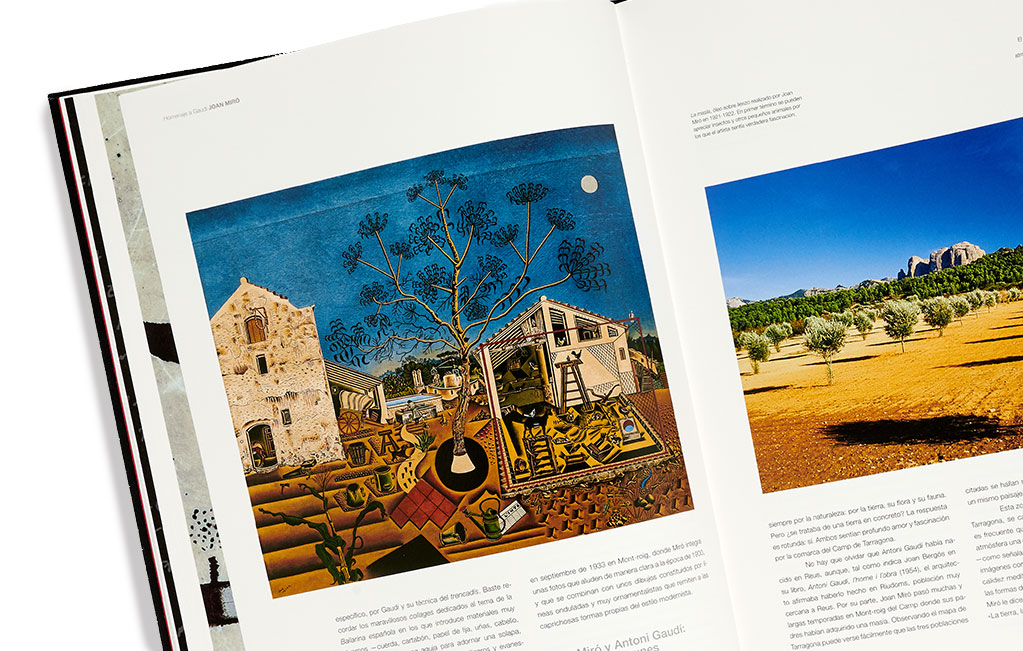
Detail of the Book of Studies in Homage to Gaudí with the painting La Masía, 1921-1922, Joan Miró.
Gaudí was passionate about the study of forms and making sketches of nature. His sketching became one of the tools of his style, as can be seen in Gaudí up Close. Miró, meanwhile, was fascinated by observing and drawing insects, plants and animals of all kinds.
Their work also included references to the landscape that had shaped them the most. For example, the Sagrada Familia’s Portal de la Esperanza (Portal of Hope) includes a reproduction of a fragment of the mountain of Montserrat. And Miró wanted to paint directly on the rocks of Mont-Roig: “It is a rocky, powerful landscape: the shapes of the mountains make one think of those of Montserrat, which have always haunted me”.
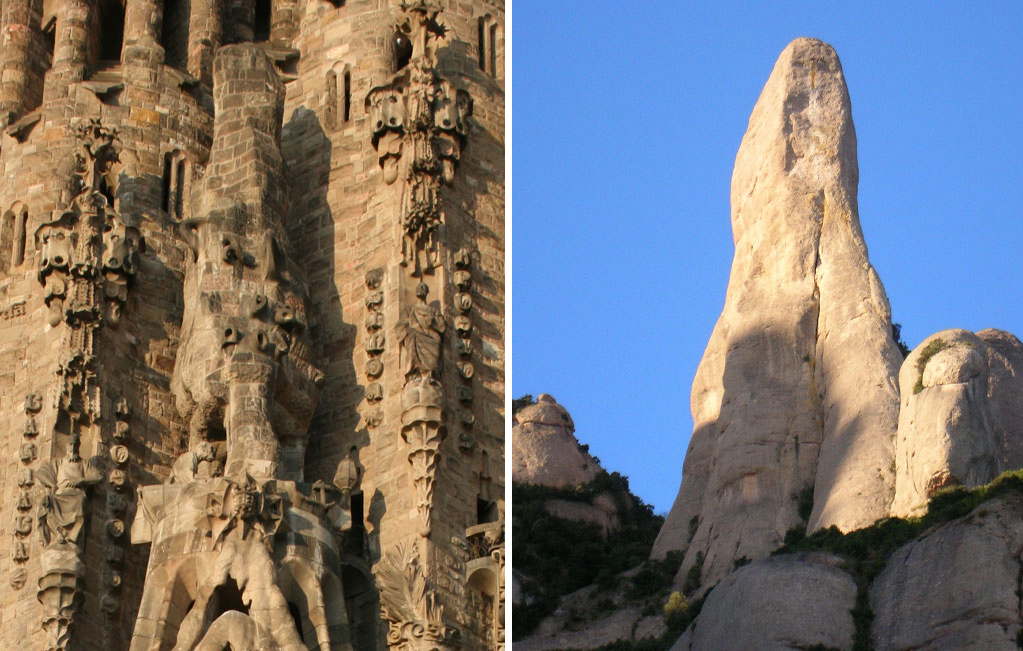
Left. Detail of the Portal of Hope of the Sagrada Familia where the 15-meter pinnacle is located, an allegory to the mountain of Montserrat.
Right. The Cavall Bernat (Montserrat, Barcelona), in which Gaudí was inspired.
Art without limits
Miró was also a sculptor. And Gaudí, more than just an architect, was a creator of spaces and forms. The latter’s influence can be seen in a comparison between the chimneys of La Pedrera and some of Miró’s sculptures like Tête (1949). Similarly, the piece called Muchacha (1967) evokes the textures of the stone walls of Park Güell, a place that made a profound impression on Miró.

Left. Tête, 1949 by Joan Miró. Macba Museum, Barcelona.
Right Chimney of Casa Milà (La Pedrera), 1906-1912, Barcelona.
In terms of materials, Miró applied the use of trencadís (broken tile mosaic) that was so characteristic of Gaudí’s work to his style in pieces created for public spaces such as Dona i ocell (Barcelona, 1983) and Luna, sol y una estrella (Miss Chicago) (Chicago, 1981).
Trencadís also inspired Miró to create the Gaudí Series (1979), a collection of 21 engravings that is analysed extensively in Homenaje a Gaudí (Tribute to Gaudí), an exclusive ARTIKA release.
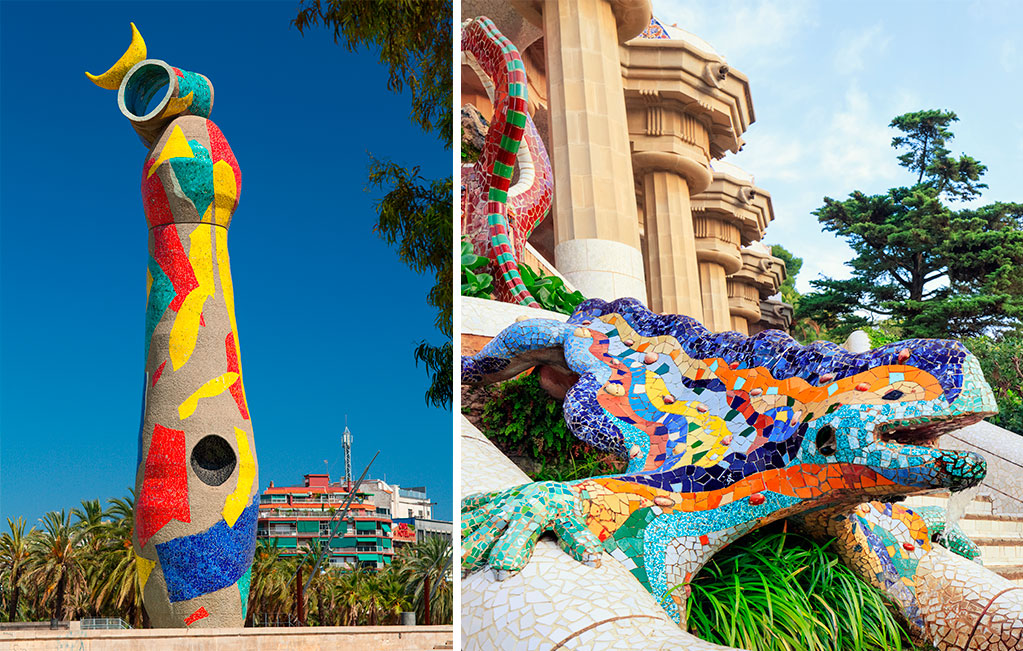
Left. Dona i ocell, 1981-1982, Joan Miró. Joan Miro Park, Barcelona.
Right. The Dragon Staircase, 1900 and 1903. Park Güell, Barcelona.
Forms and rhythms
When we think about the legacy of these two artists, we feel the sensation of movement. Action is found in all their work, and not merely in the shapes and the energy of their compositions. Miró admired the rhythm and structure of Gaudí’s architecture, but also the willingness to question processes and forms of expression.
Thus, they both shared a ground-breaking approach and, at the same time, they both claim originality, which is everything that belongs to nature and which we often overlook. Antoni Gaudí and Joan Miró were visionaries because they knew how to bring out the sublime in the seemingly obvious.
Two geniuses connected
“The great book is always open and the one we should make an effort to read is that of nature”.
Antoni Gaudí
“It would be thrilling to experiment with new local materials and inlays of materials, like Gaudí did. All of it dictated by architecture and by the landscape”.
Joan Miró
Gaudí up Close brings the unpublished legacy of the genius of modernism, once scattered in different archives, to light. This art book is the result of a research process spanning over ten years. An exclusive edition, limited to 4,998 copies, which reveals Gaudí as you have never seen him before.
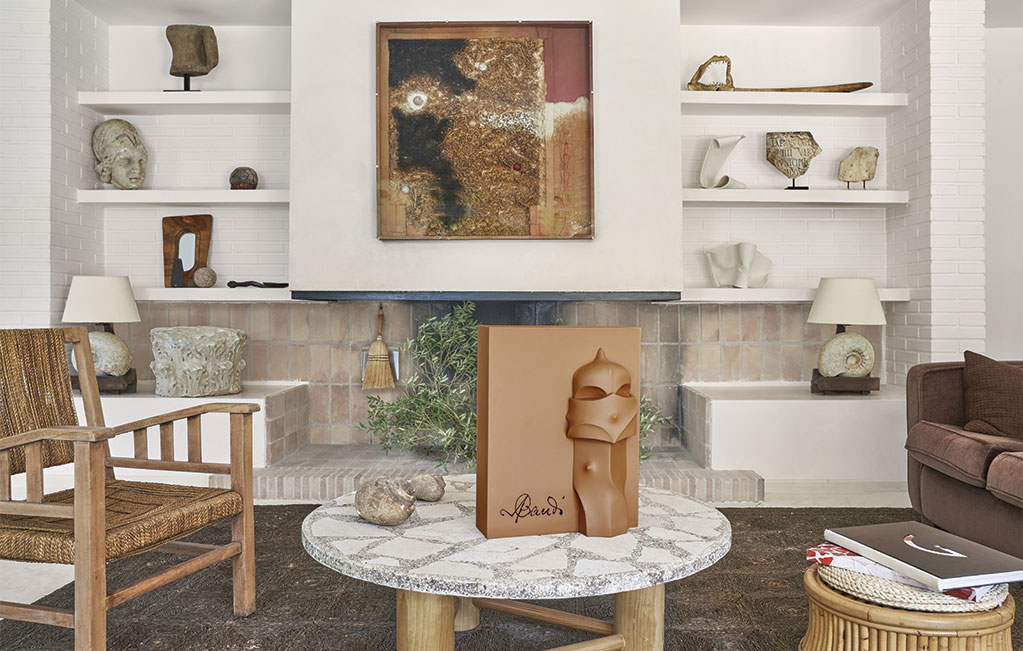
- Homenaje a Gaudí (Homage to Gaudí) features the complete suite of 21 engravings that Joan Miró dedicated to Antoni Gaudí. A unique book, now out of print, which includes articles from experts and is spectacularly presented in a wooden case.
